FACT CHECK.. Did Buhari’s govt truly rebuild Bama in Northeast Nigeria? We investigated
Against the backdrop of billions of dollars donated, and claims made by the Nigerian government, that Bama town in Borno State, a former Boko Haram enclave destroyed in the fight against terrorism, has been rebuilt, RIPPLES NIGERIA embarked on a risky fact-finding mission to ascertain the extent of rebuilding. The findings were shocking and disheartening….
Background to Bama mission
This is an aspect of the war against the terrorist group, Boko Haram that the government has suppressed for years. The story centers on the Boko Haram insurgency. But not about the bombing.
It is rather about how the Nigerian government deceived the world about rebuilding major towns destroyed by the insurgents. Over the years, the government claimed to have rebuilt many towns and villages. It was nearly impossible to report anything contrary as the fear of potential abuse by the military, attacks by the insurgents and others deter local and international press from accessing some of the towns.
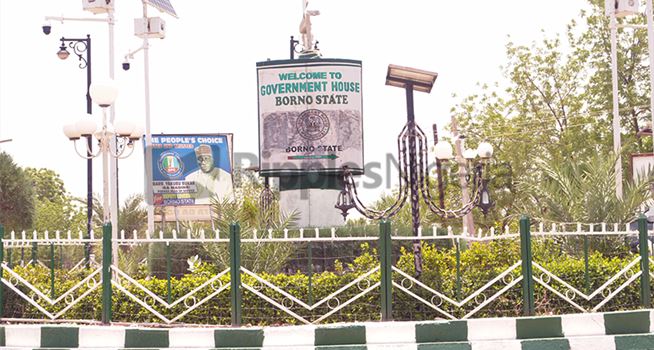
One of the most important towns, in the terrorists’ surge – if not the number one, is Bama. It was the heart of the insurgency and saw one of the most massive destruction. It was also the headquarters of Boko Haram insurgency and its short-lived caliphate in 2014. The government had often paraded the claimed rebuilding of Bama like a lifetime trophy.
So when the government started or claimed to have started rebuilding the cities in 2016, Bama was the first and most important point. In 2018, the government announced that it had built Bama to 90%. The news was celebrated; many countries, civil society organizations, including the United Nations, World Bank, United States of America and United Kingdom among many other international and local donors have pumped billions of dollars into the rebuilding.
The news leaked – through locals and a few journalist friends, that the rebuilding of Bama was faked or at least, it was not really rebuilt to the standard. They were, however, not sure as none could travel to Bama to photograph the situation and interview locals owing to the risks involved.
Fortunately, our reporter braved the odds, and travelled to Bama last month and sneaked into the town with two cameras, navigating more than 20 military check-points in the process. He got over thirty photos and many interviews that showed that the government introduced deceits into the claim of rebuilding Bama.
He placed his life on the line to fact check government’s claim on Bama, because he wants the world to know the truth; that the billions of dollars donated to the rebuilding efforts is perhaps going into private pockets, the waste of tax payers’ incomes from around the world has to stop, and the need for more transparency and honesty in the situation.
Beginning of the deception
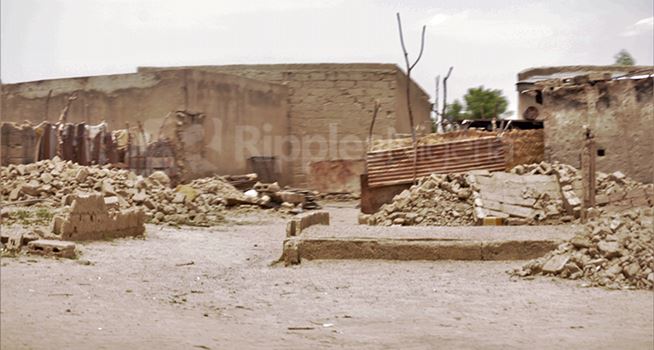
April 2018, Alkasim Abdulkadir, Head, Strategic Communications & Media of Presidential Committee on the Northeast Initiatives (PCNI) said that Bama town, Borno State has been rebuilt 90 per cent, according to reports.
Our reporter embarked on this risky fact-check mission to discover the truth, half-truths and fallacy in the rebuilding of Bama according to multiple claims by the government.
The Mad Road to Bama

There is a strange thing about the name Bama when it is mentioned in Maiduguri, Borno state, Nigeria – the hub of the Boko Haram insurgency that has killed more than 27,000 people and forced more than two million to leave their homes since 2009.
New arrivals may not know it. But the local people do. That’s why they may laugh or sigh or twist the contour of their faces when asked about the rebuilding of Bama. In that way, they avoid saying all there is to say about Bama.
Soon enough, the reason for which this strange unease clung to Bama would no longer be a secret. This road to Bama – to start off – is bad, if not mad. The car isn’t moving, it can only jump over bumps. But being that the bumps are everywhere, we can only jump some to land on others.
We have now passed the fifth military checkpoint after leaving Maiduguri town some thirteen minutes ago. It’s 10:36 am. Our journey, in the real sense, has not begun but the rain has. Though the sun has not faded. It rained, even as the sun stood its ground.
There is a hazy mental image of destruction, ruins, blood and death available to me about Bama. I knew, besides, that Bama’s antecedents have not been decent – from all I have read.
“I wish you were in Bama before the insurgency,” said the driver in pidgin – a local blend of English, differing from the original version, and widely spoken in Nigeria. “It would have helped you understand the disparity between now and then. This Boko Haram has really brought Bama down.” I ignored him but noted the line.
There are sufficient details about the character of Bama in the war against insurgency. In the days when Boko Haram had a portion to rule from the Nigerian territory, around 2014, Bama – as much as some part of neighboring Gwoza, were like the caliphate’s capital. That’s why on the outskirts of Bama, there was this Abubaker Shekau’s bridge, which wasn’t a real bridge, but the point of demarcation between the territories that fall to the insurgents and those that fall to the Nigeria authorities.
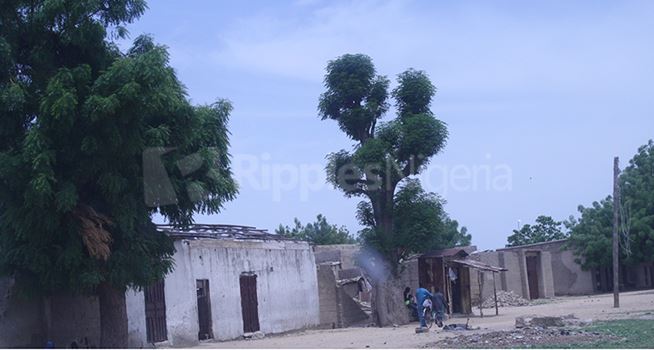
But today, the military had reclaimed that land – dating back to 2015. The insignia of destruction on the villages that once stood there is a pointer to the sort of war that it had hosted. Bama inherited the pleasure of being Boko Haram capital, a merited hub of catastrophe. Ex-governor of Borno state Alhaji Kashim Shettima was quoted as saying that “between 80 and 90 percent of all structures in the town have either been burnt, or destroyed.”
We are at the eighth or so military checkpoint now. I truly have lost count because it’s getting more and more tense. The checkpoints are getting more sophisticated and crowded. I was seated at the back – my jotter, pen and recorder with me. The fixer – who seldom spoke a word-sat next to the driver. This silence, instead of courage, triggered anxiety.
“What do you think about this Bama and the trip? What if the military discover the camera and all we have for our work?” The panic in my voice is fully expressed but he seems far less swayed. Some people can be too strong-willed so as not to allow fear – a very natural process – to reign.
“Sir, we freely accepted the journey. We have taken the risk and so we have to be bolder,” said the fixer who was probably in his thirties. “You see this Bama, that’s where I nearly lost my life last year.” I took it, knowing anyways, that this wasn’t the way to console anyone under panic.
Well, no one can tell of freedom till we get to Bama. The thin line between freedom and slavery, life and death is self-evident in this kind of journey. It’s possible to become a traitor in the eyes of this military, or a government spy in the thinking of Boko Haram. But these two are only possibilities if we are not all dead at the end of the today. It had happened many times before: leaving Maiduguri alive and returning from Bama as corpses in trucks.
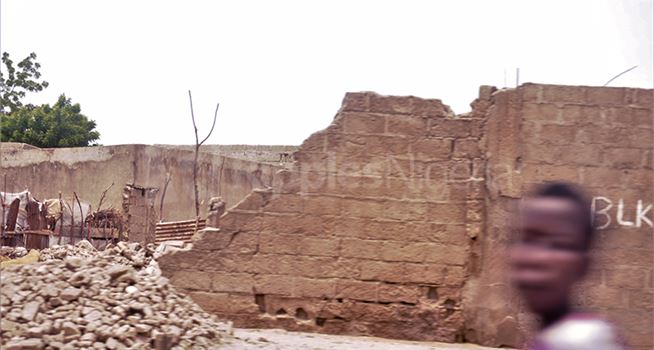
We are now at Mandarari in Konduga – just less than 40 kilometers away from Bama. The town was attacked by three suicide bombers less than a week ago, killing at least 20 persons. We were at the spot of the attack. The people had moved on, obviously. The dead are forgotten: their memories buried in the designs of the footprints on the dusty street.
This is why this journey is even more scary. My death would, to my family alone, be a huge loss – and perhaps within the cycle of a few friends. Nigeria never remembers – not even her heroes – far less my little passion. If anything, I would be a foolish example of one overzealous journalist who died chasing mystery. In a time like this, I feel fresh love for my family in Lagos – Nigeria’s largest commercial city, over 700 miles away.
Konduga is dangerous -that I know. But of this Bama, I know not the word for it. The closer we get to Bama, the stricter it becomes. At the last checkpoint after Konduga, more or less like the partial beginning of the journey to Bama, all passengers must climb down and trek.
The checkpoints are robustly stuffed with heavy mounds of containers – painted red, yellow and black, and arranged in a way that made the cars twist left and right slowly. Bags of cements – like a dwarf fence -stood firm before a small tent upon which a regalia of the Nigeria Army’s colour hung loosely.

We have arrived Kwuri – the first village on the outskirts of Bama – still within the bounds of Konduga. First impression, they say, matters. “There was a village here called Kwuri before,” said the driver, pointing at fallen rubble, a stretch of lively greeneries and spreading shrubs with one hand. Heaps of sharp sand – brought in about six weeks ago, lined both sides of the road. I think there is hope of rebuilding.
Five minutes passed, and we arrived Awlari,a small farming community, which in part took a form of a promising commercial city with its small markets and stalls. There are still rubbles of broken homes, now buried under the emergent trees with attractive diversity: some looking like neem, others, lifeless baobab. But unlike Kwuri, there is no sand to point to any hope of rebuilding. To what do we input the fate of Awlari?
Well, it’s still too early to say, especially when you think that Bama is quite large – covering an area of 5000 km2 and a population of 270,000 according to the 2006 Nigerian national census. Small and scanty daily markets dot the road, and a few shops springing up by the edge of the road inject vibe into the lonely footsteps of farmers toing and froing their farms. children, in their swaying gowns, colourful hijab – most barefooted – chant prayers and Koranic verses.
It is usually enticing to assume because of the ease. We have passed two more villages: Kalan and Kauramari and none was rebuilt. We passed more than 20 military checkpoints now, and a rare immigration checkpoint at last, before the small curve that led to Bama town. We came down, under intense scrutiny from the last batch of military checkpoints, but survived into the surprises of Bama.
Bama: the former footprint of Boko Haram
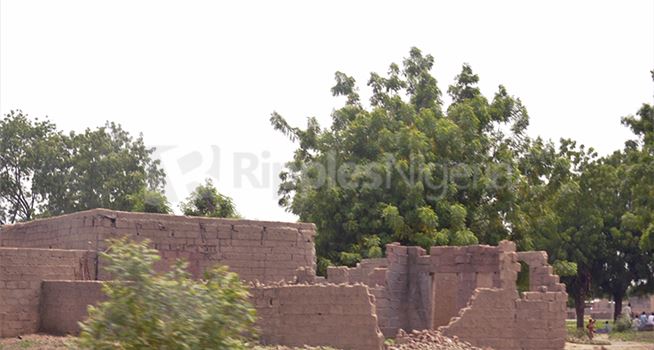
Bama is broken. That’s not a secret. But I am happy still, for the gallantry of the soldiers we met here. Many of them have been here for years, seizing this thriving commercial town from Boko Haram and pushing the insurgents back to the forest. It is true that attacks occur. But such attacks, a product of many other complex twists in the war efforts, isn’t the fault of the common soldiers; thousands of whom have died allegedly in the war.
Against the severe conditions facing the soldiers, gallantry isn’t wanting at all. What should have been a heavily rotated operation has seen some soldiers staying in the war for five years, others more and a few less. Many twisted narratives have gone into the war – ill equipment, hunger and corruption from high ranking military officials. Well, these soldiers, their gallantry against apparent odds, is a story for next time.
The driver took the first turn by the left, we drove first into Bama General Hospital. This place stays on the minds of many girls and women. This was where, according to Amnesty’s investigations, terrible acts of sexual abuse and exploitation of IDPs happened in 2015/2016. This place was rebuilt, but not yet in use. The neighboring Bama Primary School has been rebuilt also.
Despite this positive start, after a couple of hours driving around Bama and towards the outskirts, on the way that led to Gwoza, I agreed it was all deception. The Shehu’s palace had been rebuilt and his street enjoyed a strong security presence. After the palace and perhaps few hundreds of houses, surely less than a thousand and still ridiculously poor in rebuilding standard, the rest of the rebuilding narrative has no evidence to stand. Besides, some of the houses rebuilt were also either funded by civil society organisations, or private individuals.
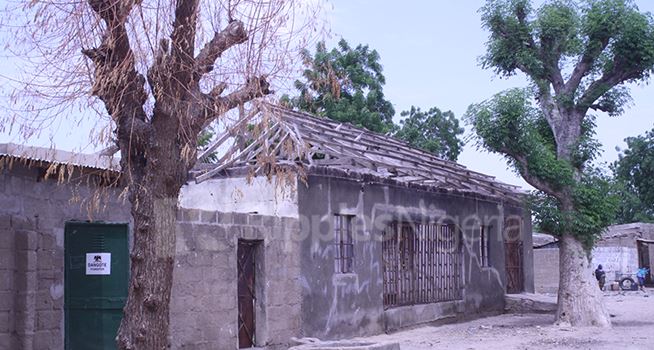
But why, in the first place, should Bama be at the center of all these lies? Interest. Many interest in the Bama story, from local and international authorities. That’s because Bama, to the government, is like a trophy – which is paraded to wade off antagonism of non- performance. It was this familiar thesis that is driving the narrative of Boko Haram’s defeat– and has drawn to itself into the north-east rebuilding plans – the last hope of millions of people crushed by the 10 years’ war.
That’s why the ‘rebuilding of Bama’ was deeply celebrated. So when Alkasim Abdulkadir, Head, Strategic Communications & Media of Presidential Committee on the Northeast Initiatives, PCNI, said that 90% of Bama has been rebuilt, according to reports on This Day, it was clearly undebatable.
Meanwhile, the Ex- governor of Borno state Kashim Shettima, now a serving senator of the Federal Republic of Nigeria, had said that 90 percent of Bama was destroyed. And since Abdulkadir had said that 90% of the town was rebuilt, then Bama – in other words – is now literally, rebuilt.
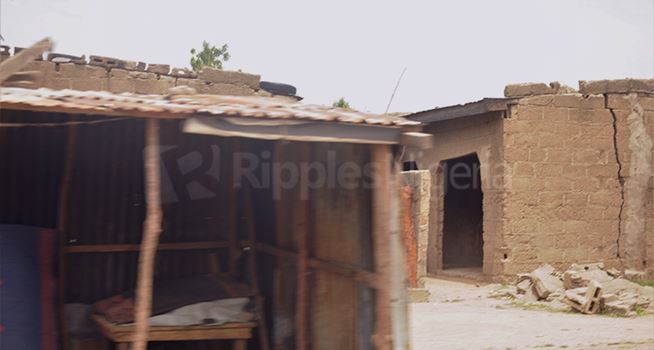
There is also another way to reach the same conclusion – even more mathematically. In 2016, professor Babagana Umaru, the then commissioner for Reconstruction, Rehabilitation and Resettlement – an apex state body, charged with rebuilding Borno state, was quoted as saying that “Bama is badly damaged by the insurgents, in fact it is the worst hit area in the state. No fewer than 10,000 houses were destroyed, in addition to over 86 public buildings, comprising schools, and hospitals among others.”
It will cost 30 billion naira ($83 million), he had said, to rebuild Bama. It was started, the rebuilding of Bama that year. Not much after that was heard of Bama except to cliché commentary of technical defeat, massive reconstruction, committees and commissions.
In 2018 – after an expectant two years wait, the government approved the return of 120,000 Internally Displaced Persons to rebuilt Bama. In place of the 10,000 plus houses destroyed in Bama, Umaru said the government has “renovated 11,630 houses, eight primary schools, eight boreholes, in addition to the 1,800 shops and market stalls that we have newly constructed,” according to The Punch, one of Nigeria’s leading local newspapers. In the final analysis, Bama was rebuilt.
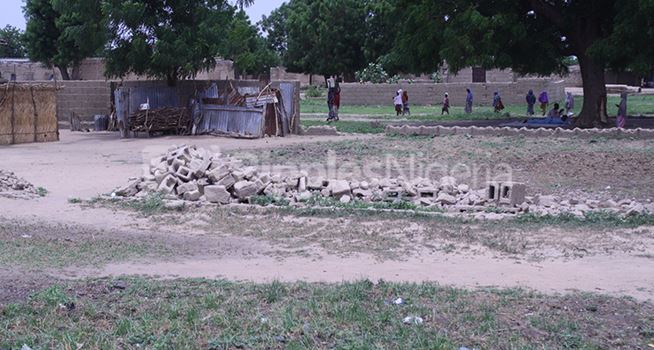
The catchphrase for the rebuilding of Bama was the “Bama Initiative” which was used to describe a rebuilding partnership that would see the Federal Government of Nigeria contribute 67% of the funds for the initiative while the Borno state government carters for the remaining 33%.
These statistics guided our curiosity, and it was difficult to expect the contrary. But after roving through many parts of Bama town – through the corridors of Shehu’s palace to the Gwoza route and the east of Sambisa Forest, Bama’s fate shone in doom.
The truth, lies and half-truth of the rebuilt Bama
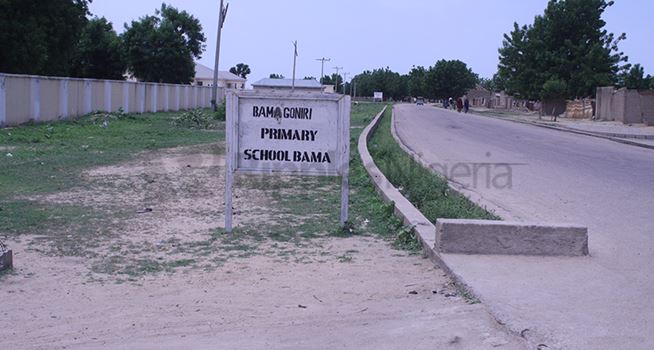
The situation in Bama, convey a picture of contrast against a government that has wriggled between official secrecy and deception to preach rebuilding.
To be clear, the rebuilding of Bama touched a few key infrastructures like schools, hospitals and boreholes – not all, just some of them. In fact, aside the Bama General Hospital, we didn’t meet any other rebuilt medical facility in Bama town. Locals are also not sure if anything else has been built elsewhere. “I know that my house wasn’t rebuilt,” says a local chief in Shifrin Kignamgalari, Bama. “I also knew when an NGO was sharing building materials but my family wasn’t helped.”
But the bigger problem with the second largest town in Borno state, strategically placed on the route to Cameroun, is not the way the rubble of the houses burnt down five years ago spewed the streets. It’s not even the patchy painting of important public places to appeal to the impression of rebuilding – especially to important dignitaries visiting the town for inspection. It is, sadly, the manner in which the few traces of rebuilding were done.
There is a major route that passes through Bama – all the way to Gwoza. That’s Bama’s busiest route, and a point that those who come into Bama should see. The rebuilding team perhaps picked the first two or three houses and shops on both flanks of the road for rebuilding. The rebuilding took – mostly, the form of repainting the house, laying back old or new blocks to get the house back to lintel level for roofing.
With a shiny silver zinc on the roof, the smokescreen, however, are largely the privileges of the structures that fall by the road side.
The rebuilt structures were partly beautified on the outside while most of the interior are untouched. There were a couple of houses around Shifrin Kignamgalari painted on the outside but inside, the dark ashes of the raze that brought them down many years ago are still on the wall and fences.
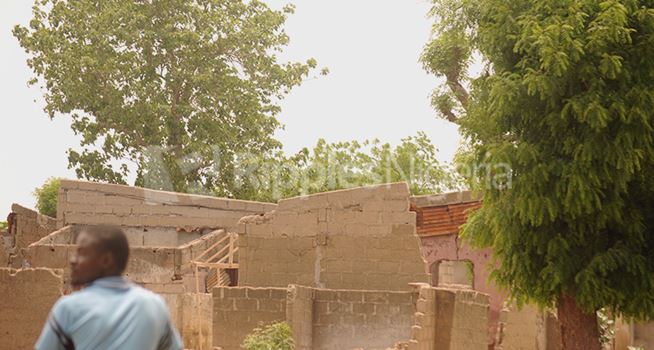
The local people are back to Bama – though not all. There are some who are rebuilding their own homes with their money, and a few others received assistance from NGOs. The proximity of Bama to Sambisa Forest – less than 30 minutes away mean that the security situation is still fragile.
Returnees are mulling returning to the farms. The risk is high as the farms touch the forest where the insurgents have dominated. Two days earlier, one farmer was killed by Boko Haram, according to locals. “That’s the second farmer dying in five days,” says a local farmer, who plants beans and millet. “The soldiers say we shouldn’t farm more than one kilometers away this year. But Boko Haram are waiting and killing in the farms.”
The air in Bama is full of distrust. The locals are nervous at the presence of new faces, cameras and phones. “There are Boko Haram informants here,” a local told us. “There are also military informants too.”
We spent another one hour driving around Bama, taking photos and interviews, searching for anything different – all in the most discreet ways. The army really mingle here in Bama – and a few are nearly able to speak the local language. One military officer was courting us – using a bicycle to track our movement and monitor our work.
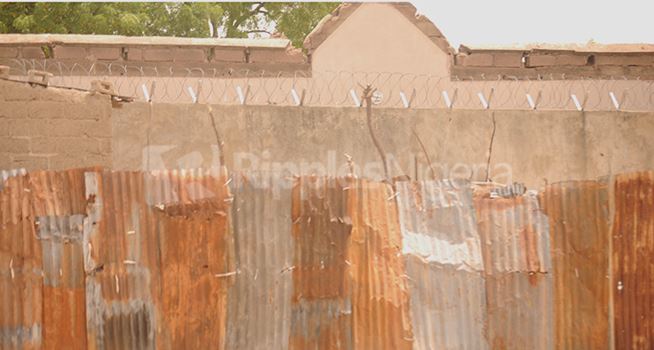
The driver – who, as a result of his over 20 years of working in Bama, doubles as a guide recommended we move towards Gwoza. This way, we miss nothing about the situation in Bama as they are around five villages/town on that route.
Before we move that way, I can draw a semi-conclusion. What we have seen in Bama is the rebuilding of less than “30 percent” of Bama, according to a Maiduguri-based journalist who worked in villages early this year.
For me, percentage can be misleading, and quantification slippery. So let’s say Bama wasn’t rebuilt, as it is lauded. A small number of public facilities were rebuilt. Boreholes are working randomly across districts and villages. There was scanty repainting. Few new blocks are adjoined to broken homes, along old burnt blocks. Few houses were re-roofed.
What does this mean?
“They had selected places that people would see first when they come to Bama. As you meet this first few building, you would assume the city was really built. But look behind that yellow paint, and you would see ashes and black dust,” said one local, who works in a furniture shop..
“When a big visitor comes(dignitaries), they take them to the painted houses by the roadside, to the palace of the king and the hospitals but my own house has no roof on it,” he adds.
The driver had stopped now to ask our way to the chief’s home. The furniture maker who spoke to us wasn’t happy, in that his house wasn’t also rebuilt. He had fixed a deck for himself though, beside the rubble of his former house. Instead of taking us straight away to the king, he granted us what became a fragment of our many interviews.
“I do not know what you want the chief to show you differently. You are in Bama and you can see there was almost nothing rebuilt except the houses that line the road,” he said. “Is this how a rebuilt home looks? Well, let’s go to chief. I am not a chief and may not teach you your work,” he said, with heavy resignation in his voice.
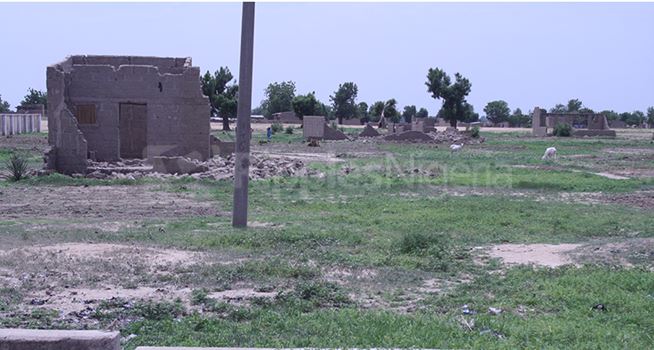
The car drove through a curve: revealing – as we moved – the vast destructions untouched. How did all this happen? That a sect ruined a town and ruled its vast lands and farm. That this town lay in ashes. Well, it’s difficult to blame the government. The destruction is way too much for any government to erase instantly. Still, a good government won’t lie to her own people; neither will it praise emptiness.
There is a feeling that Boko Haram is still very lethal. Well, there is an option to refute with the advancement recorded by the military. Deeply remote villages might continue to face attacks. A few might slip through to the capital. But these soldiers, in the worst conditions have fought so gallantly: pushing back Boko Haram to Sambisa. Indeed, this Boko Haram war has layers.
“This war isn’t simply about guns,” said an army officer who had joined our car on the way back to Maiduguri. “I have been fighting in this bush for seven years. I don’t know if this war will ever end but soldiers are dying here,” he said.
Enough now, of Boko Haram and the army. After Molai – a small community in Bama, we drove through more villages on the route to Gwoza. It’s difficult to separate the villages except by their names because the identity of destruction are so similar. That’s why the fixer would say: “There was a village,” “People lived there,” “Their hospital and school was there and there.” “This one,” he added, “is Seiyi.”
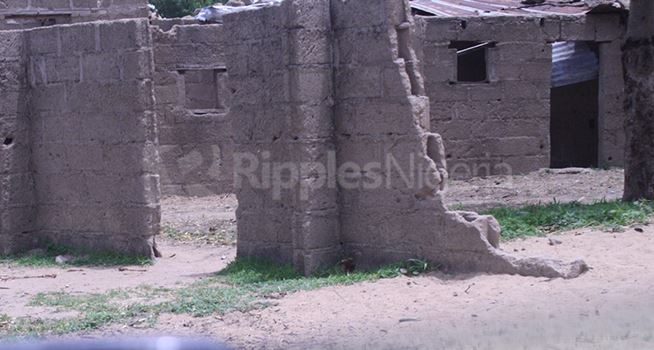
Seiyi is vast to the eyes, stretching in some ways towards Sambisa. It was a moderately growing community judging by the heavy heaps of broken houses and the diversity of their designs. Houses are not rebuilt here. Only a broken wall staying above a huge heap. Mangilmiri and Kwanan Mallam Maji – are the same.
Few kilometres after Jibra, there was Katafila Kura and Katafila Gana. In these villages/towns, tens of hundreds of houses were blown open and destroyed – a typical imprint of Boko Haram. The black traces of the inferno that burnt this village are still evident in the few surviving walls. At any rate, it’s too late to continue the journey, and my conviction is now above impulsive conclusions.
Few minutes ago, a kind old man just whispered something to the fixer: “Boko Haram informants are aware that you are in town. It could be too costly to stay around for another one hour. You may hear the noise that would make you cry.” Being that Bama cuts into the edges of Sambisa Forest – the Boko Haram stronghold, we left.
Bama town is underbuilt clearly, but many villages in the edge of the city are not even touched. For instance, Gulumba was not rebuilt, though it’s less than fifteen kilometres outside Bama town. Opposite Gulumba is Andara. Much like the first, Andara is destroyed and not rebuilt. The other village is Kute-Andara, by the edge of Bama town.
“In reality, what the government touched is not up to 30 percent. My view is that the government didn’t rebuild Bama. I have been here for more than 20 years. I have spent all my life in Bama. What is provoking me is that they claim to have rebuilt the area but they have not touched anything,” said the 30 year old journalist who has worked for more than four years in the state. .
Boko Haram: It’s business not bombing.
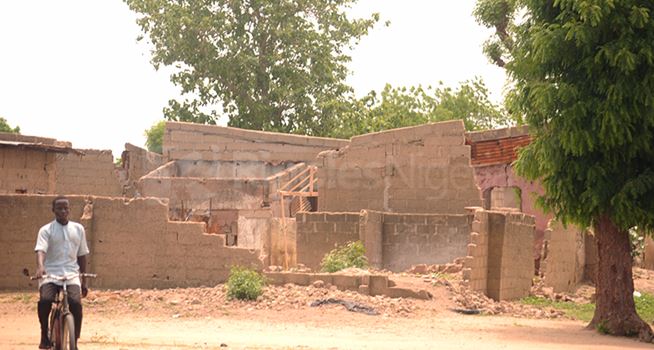
“The Boko Haram,” says a local journalist in Maiduguri, the capital city of Maiduguri, “is now turning to big business.”
“For many NGOs, the government and even some locals, it’s an opportunity to grow. So, Boko Haram isn’t stopping if we don’t stop the profiteering.”
That’s the worst way to see a city battling with deadly insurgency for a decade, but it’s surely not all wrong a saying. Take the rebuilding of Bama in particular and northeast at large, billions of dollars and numerous agencies are involved for many years now.
For instance, the Borno State government established the Ministry of Rehabilitation, Reconstruction and Resettlement (RRR). There is North East Development Commission and Presidential Committee on the Northeast Initiatives – all directly or indirectly involved in the rebuilding of the region. Aside from the World Bank, United States of America, the United Nations and the United Kingdom, many other agencies, individuals and civil society organizations are deeply involved in funding and supporting the rebuilding, especially of key towns like Bama.
Yet, large scale deception continues to thrive – such that every facet of the war against insurgency, from deployment, to equipping the fighting troop, and running internally displaced persons, and now –resettlement, has been touched by the seeming lies.
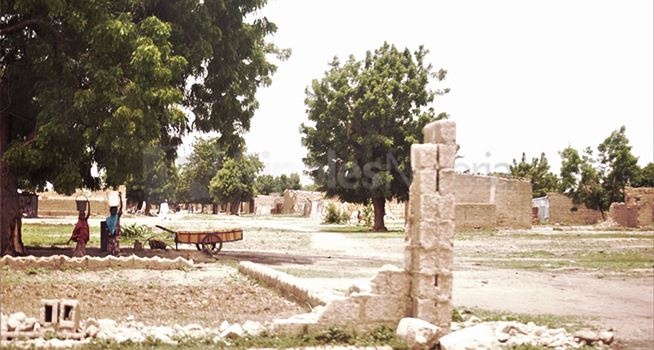
I had visited the office of the RRR twice while still in Borno State, to find an explanation to the Bama situation. The person who could respond to my inquiry, I was told, wasn’t on seat. When it failed, I called the contact numbers of both the North East Development Commission and Presidential Committee on the Northeast Initiatives, for a period of over three weeks, and it either said it’s not assigned or switched off.
The World Bank-led PeaceBuilding Assessment (RPBA) pre-financing assessment said that around $9 billion had been spent on damaged infrastructure. The years after, as much as those before, saw overwhelming support for the rebuilding of the north-east. It’s true, vast areas had been touched, and Bama is a small part of the entire ruin – considering that Borno alone is so large, other northeast states are badly impacted and the traces of the war spread to a couple of neighboring countries.
But Nigeria has never ceased to get support from numerous governments around the world. And while it’s difficult to know how much is actually released after pledges, it is still important to highlight a few major pledges and donations Nigeria has received over the years in the efforts to rebuild the north east.
| Donor Agency/Country | Amount | Year |
| World Bank | $2.1 billion (Loan) | 2015 |
| World Bank | $200 million (Credit support) | 2017 |
| China | $5.5 million (Donation) | 2017 |
| World Bank | $800 million ( Credit Support) | 2016 |
| Japan | $1.5 million (Donation) | 2019 |
| World Bank | $575 million (Credit Support) | 2016 |
| France | $9 million (Donation) | 2017 |
| European Union | $33.5 million (Donation) | 2017 |
| USA | $102 million (Donation) | 2018 |
| African Development Bank | $250 million (Loan/Grant) | 2016 |
| The United Kingdom | $243 million (Donation) | 2018 – 2022 |
| African Union | $ 100 million (Donation) | 2017 |
| The Government of Japan | $8.29 million (Grant aid) | 2015 |
| African Development Bank | $6.8 million (Loan) | 2019 |
| Switzerland | $ 8 million (Donation) | 2015 |
| European Union | $ 20 million (Donation) | 2016 |
For now, the Bama fallacy shows that except better measures are taken, billions of dollars – which could have made differences in the many facets of the insurgency war– might continually slip into private pockets while propaganda continues to prevail.
We passed two more villages: Bulakurayi and Jibra and nothing was different. In this kind of trip, reflection is inevitable. Many were killed on this soil, the sorrows and pain. The homeless and poverty that has set in. The nature of the rubble really gave hope about Bama’s growth before now. Fuel stations, burnt cars, destroyed hotels, banks and schools are now signposts of a once promising town.
END NOTE: There are many more international donors partnering in one form or the other to rebuild the region, aside numerous local budgets for the project – largely shrouded in secrecy. It is not clear – not known to us – how many of the pledges, loans and grants have been received and what percentage is put exactly into the rebuilding of Bama. There is also a careful effort to mention only funds that are designated – partly or fully for rebuilding the north-east.
Editor’s note: The identity of the reporter has been covered, due to the sensitivity of the report and antecedents of government agents over such kinds of reports.



